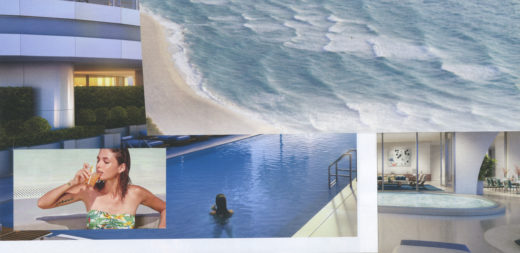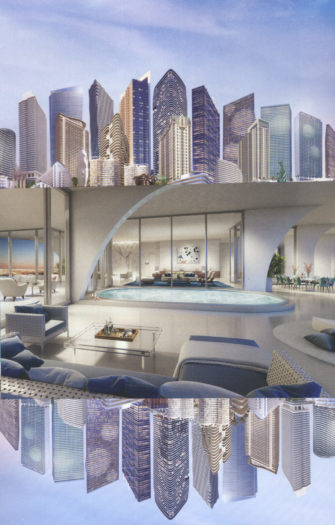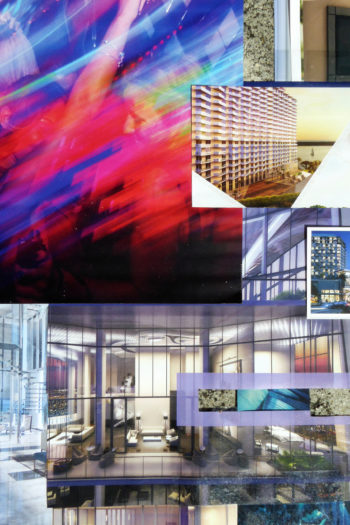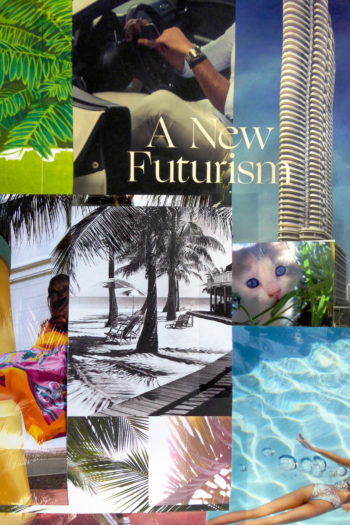publicdisplay.pro
Patricia Margarita Hernandez and Natalia Zuluaga
 Images part of "The Leisure Pit 2" by Domingo Castillo
Courtesy of Miami World Internet Cafe
Images part of "The Leisure Pit 2" by Domingo Castillo
Courtesy of Miami World Internet Cafe
Part A. The Set Up, A Pitch.
The 2008 crash forced Contemporary Art (CA) institutions to restructure their financial dependencies and sources; a process that only exaggerated what had started after economic shifts in the 1970’s dried up public funding for the arts and recalibrated those models toward a dependency on corporate sponsorships. In some cases this led to de-institutionalization, to work small with small number of participants, in situations that involved little money. The modalities that ensued are familiar: the freelance curator, programming “take overs” by small institutions within larger more powerful structures, the boom of the artist residency. These operational methods were not just co-opted into larger institutions, they further revealed a strengthened symbolic and reputational marketplace that emerged after 2008: cash savings and earnings for the institution was exchanged for legitimacy on all sides—for the sponsor, the board member, artist, curator, and institution. Again “we” were supposedly reminded that the inside was the outside and that the possibilities for institutional critique had been foreclosed.
However, other instrumental observations also emerged from this period; that the relationship between Contemporary Art and the world was not limited by the semantic value it created within art, but instead that this semantic value was actually part of a broader implicated relationship between Contemporary Art and an era of neoliberal hyper-capitalism. Perhaps, they were even the same. These events helped us understand how reputational currency functioned like hyper advertising in fueling real estate speculation and gentrification—and in turn how this process reflected the financialization of everything (i.e. deriving value from contingent profit).
What we want to consider is the following: if the CA condition is imbricated within the neoliberal condition, then we can assume that the institution is a site for restructuring those very conditions. In other words, if we acknowledge CA institutions as a power actor within the global financial market, followed by an understanding that capital has structured power dynamics well into the future through investment, how, then, can we simulate their strategies to effect a change that the present demands? What, then, are the kinds of institutional forms that we want to create and foster in order to alter the conditions of neoliberal capitalism? It is a big question, a potentially paralyzing one. But if the formula is something like: CA (Institutions made of a collective of agents) + Capitalism = economic disparity, hyper individualism, social inequality; then influence/inhabit the formula in order to change the outcome.
The following is the beginning of a PLP/PDP master plan, localized in Miami in order to situate your global confusion.

Museums
The Book
The Catalogue
A Collaboration
Self Organized Groups
Alternative Art Spaces
Artist Run Spaces
Nomadic
Art Fairs
Biennales
Symposia
Research Centers
Pedagogical Platforms
Freelancers
Tradition, cannon, criticism, and art education
Participation as organizational model- not to be romanticized
Task 1: Introduce the current state of Contemporary Art (CA) within a Miami setting.
Miami is at the crossroads of where neoliberal finance and culture intersect. It is a place where you come to party and retire. The next area is always being gentrified, the beaches are usually packed, and the swamp toxifies in the background. A place where development companies buy property, build high rises, and dictate how the general population moves through the city. Miami is sinking due to the sea level rising and climate change, yet, it is a thriving port city, where financial markets flow in and out of the United States. A place where drugs come in. A place where information travels through. An entry into the US for the Caribbean and Latin America. Miami exploits its lifestyle branding through Caribbean flavors, margaritas with cocktail parasols, palm trees, sunsets, high end shopping, vacation vibes, and relaxation.[1]
People movement.
Port movement.
Real estate speculation.
Funny money.
Shadow economies.
Skeleton coasts.
Overdoses and face eating.
Productive Contradictions.
Someone once said Miami is only relevant for 4 days out of the year. He (a white male, curator, of both academic pedigree and economic privilege) was referring to Art Basel Miami Beach. The shortsightedness of the comment shouldn’t elicit our emotional responses or the production of a list of justifications. The shortsightedness of the observation is that it fails to recognize how a global CA apparatus functions at a structural and infrastructural level, in city scale (not just gallery scale) and on a temporal range of decades (not days).
Master plans build horizons of technological innovation, shopping centers, new hearts, and reimagined spaces. Miami is a presentation for an investment portfolio in a drowned future that doesn’t need to happen in order to actualize a profitable now. Can you think of other places where the imminent threat of the effects of climate change only fuels the need to buy now? Probably.

In this way, the idea that “Miami is only relevant for four days” just proves how [Miami][3] is the paradigm of the globalized relationship between CA and economic development. And as such: [Miami] becomes relevant precisely because it localizes a global condition, and as such is an ideal site for a project of agency and traction that creates a shift away and a pivot out of those dominant conditions.[4]
Part B. Enter PLP / PDP
Assumption 2. Opacity in CA as it relates to power structures within it.
Semantic Value (i.e. theory, the magical meaning of art, abstraction from material realities) invites and fosters a reputational economy where reputational currencies are cachéd in for cash.[5]
Task 2. Define PDP/PLP
PLP, Pa’ la Pinga: A mode of operating with disregard to structural limits and ceilings, but with a strategic intent to instrumentalize those limits. It’s defined more by “Fuck it”. It’s [Miami]’s way of de-professionalization, it’s that moment when [you just want to stop working and enjoy the beach, have a mojito, and enjoy the sun or at least the fake beach at Sand Bar].
It’s the pill that makes having agency within [insert any neoliberal struggle here] possible.
PDP, Public Displays of Professionalism: This is every institution, action, mode of producing culture in Assumption 1.
Part C. Master Planning.
How does a Pa’ la Pinga (PLP) recalibrate Public Displays of Professionalism (PDP), and visa versa?
In order to create a master plan, political economies are organized in qualitative categories (for example: improvement = jobs, housing, economic equality, democratic ideals). The master plan is thus a horizon that is rendered from the relationship between social feedback and political power. A master plan for a city is drawn out, say, 50 years ahead as a horizon, and the political, social, private, public energies are vectorized toward the closest realization of that horizon.
As explained above, what matters in the now is not those 4 days (what matters in the now is actually racial injustice, economic disparity, climate change, etc); what happens in the future, is already determining that those things in the now remain the same. The master plan doesn’t need to figure out every step until then, the master plan–the PLP plan–instrumentalizes the PDP, and visa versa, in order to exit from their (CA) political trajectories and enter into a poignant mode of operating.

Location:
Strategically reinserting the art space/institution into a literal location of power. Not to be located in the next new up and coming area, rather position the institution within already created centers where power is on display (for example, Miami’s Design District).
Hype:
Circulation and distribution of an image, in this case we are using [Miami] as a stand in for any developing neoliberal city, which is a global problem. What is understood here is that the sunset, beaches, relaxed tropicality sells. With its close proximity to exotic islands, Miami uses hype to garner more investments, tourism, or the next pyramid scheme. This is the PLP, documented, packaged, and sold.
Action:
Appropriation of a think tank model focused on how CA can shift into a mode of strategic planning that mimics financial capital. Financial and real estate power players have the next 30-50 years planned, the future literally is dictating the present. PLP/PDP does not want to judiciously study the effects of neoliberal, right-wing, conditions or its futures. It wants to harness the tools, the strategies, establish the operations in order to act in a way that redirects, recalibrates, and sets the conditions of how power is played in the PDP. Calling out the soft politics of benevolent lefty concerns in CA that are being utilized by capital (returns on investments, money laundering, city development, tourism), PLP exploits them for other ends.
About the PDP/PLP
PDP (Public Display of Professionalism), a transdisciplinary think tank embedded in [Miami’s Design District] that is a site for collective thought, discourse, knowledge exchange, and production. The projects that PDP undertakes question the ways in which [Miami]’s image, financial capital, and information flows generate new “creative” business models, neighborhood redevelopments, and high-end retail centers, all of which exploit a particular mode of [relaxed tropicality].
PDP emerged in response to the need for office space for curators, artists, and other cultural producers in [Miami] whose practices reach beyond exhibition and object-making models. Because of limited financial resources, cultural practitioners have historically found subsidized spaces in “developing” neighborhoods such as [Little Haiti], [Wynwood], the [Design District], and [Miami Beach]. However, this process, which involves the exchange of cultural capital-for-space, currently limits our proximity to the business, financial, and high-end retail centers of [Miami] that are the primary subjects of our practices. As a result, we have decided to embed this project within a storefront in the [Design District]. In this environment art is either on display as a manifestation of global artistic trends or instrumentalized for the commercial purposes of developing the air of a creative and cultural destination rather than potential critical engagement. In doing so, we aim to make PDP a context-specific, transdisciplinary office for collective thought, discourse, knowledge exchange, and production about the complicated intersections among art-making and commerce.
___________________________________________
[1] Miami’s relationship with and investment to history is a transient and shifting one: constantly re-settled by the movement of people (immigrants, exiles, transplants, and tourists) and landscapes (from the interventionist policies that attempted to drain the everglades, to the high-rise rush in downtown). On one hand, this condition leads to a collective memory loss where nothing is cemented and everything is for the taking. On the other, one has the ability to produce and test ideas at a scale much larger than in other cities.
[2] Zolghadr, Tirdad. Traction. (Berlin: Sternberg Press, 2016), 33.
[3] The use of the brackets is to underscore the notion that any developing global city could be inserted, it moves from the particular to the global. Please insert your city here. The neoliberal city has and continues to be ubiquitously developed, at speeds that defy nature. Trumped up economies.
[4] Note the difference that shifting and pivoting is not escaping. It is merely exiting. For more see, Malik, Suhail. (2013, June 21) Exit not escape- On The Necessity of Art’s Exit from Contemporary Art. Retrieved from https://www.youtube.com/watch?v=fimEhntbRZ4
[5] Caché in spanish has a similar definition to the word cachet, a state of being respected, admired, or to have clout. To say, “tiene un caché millonario” means to carry the clout, and elegance of a millionaire without the capital to match it.










